Ebony Spleenwort (Asplenium platyneuron) is a small, perennial fern belonging to the Aspleniaceae family. Native to North America east of the Rocky Mountains and parts of South Africa, this species thrives in woodlands, thickets, and mossy banks, making it a favorite for shaded gardens.
Standing at a height of 10 to 51 cm, its foliage bears a striking resemblance to the Christmas fern, offering a delicate yet robust texture. The plant prefers partial shade for optimal growth. In spring, it produces green flowers that transition to reddish-brown as they mature, adding subtle seasonal interest to its surroundings.
| Common name | Brownstem Spleenwort, Ebony Spleenwort |
| Botanical name | Asplenium platyneuron |
| Family | Aspleniaceae |
| Species | platyneuron |
| Origin | North America E. of Rocky Mts., S. Africa |
| Life cycle | Perennial |
| Plant type | Fern |
| Hardiness zone | 3, 4, 5, 6, 7, 8, 9 |
| Sunlight | Dappled Sunlight |
| Maintenance | Low |
| Soil condition | High Organic Matter |
| Soil ph | Acid |
| Drainage | Well-Drained |
| Spacing | 12 in. – 3 ft. |
| Height | 8 in. – 1 ft. 8 in. |
| Leaf color | Green |
| Stem color | Black |
| Garden style | Shade Garden |
I. Appearance and Characteristics
Asplenium platyneuron (syn. Asplenium ebeneum), commonly known as ebony spleenwort or brownstem spleenwort, is a fern native to North America east of the Rocky Mountains.
The species was first described in 1753 by Linnaeus as Acrostichum platyneuros, although Linnaeus’ type drew on material from several other species as well. It was more commonly called Asplenium ebeneum, a name published by William Aiton in 1789, until the rediscovery and revival of the Linnaean epithet in the late nineteenth century.
Several forms and varieties of the species have been described, but few are recognized today; in particular, larger and more fertile specimens, those with more or less toothed leaves, and those with proliferating buds are considered to fall within the natural range of variation of the species, and do not require taxonomic distinction. A. platyneuron f. hortonae, a sterile form with the pinnae cut to toothed pinnules, and f. furcatum, with forking fronds, are still recognized.
Ebony spleenwort is a small fern with pinnate fronds, growing in tufts, with a shiny reddish-brown stipe and rachis. The fronds are dimorphic, with long, erect, dark green fertile fronds, which are deciduous, and shorter, spreading, lighter green sterile fronds, which are evergreen.
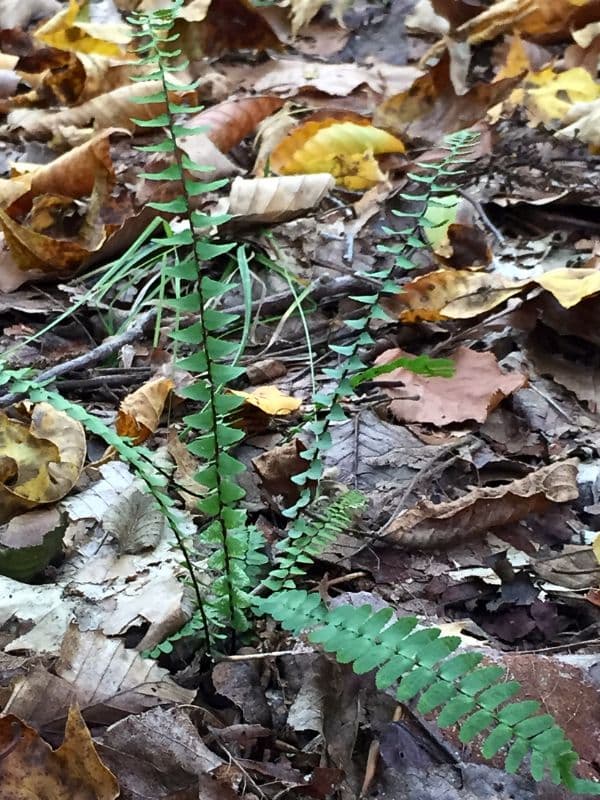
Roots and rhizomes
This fern does not spread and form new plants via the roots. The rhizome, from 1 to 2.5 millimeters (0.04 to 0.1 in) or perhaps 4 millimeters (0.2 in) in diameter, bears a few narrowly linear-deltate scales, black to dark brown in color and strongly clathrate (bearing a lattice-like pattern). The scales are 2 to 4 millimeters (0.08 to 0.2 in) or 5 millimeters (0.2 in) long and 0.3 to 0.6 millimeters (0.01 to 0.02 in) wide, with margins entire (untoothed) or very nearly so.
Leaves
The stipe (the stalk of the leaf, below the blade) is 1 to 10 centimeters (0.4 to 4 in) long, and comprises one-quarter to one-third of the length of the blade. It lacks wings, and is a shiny reddish-brown or blackish-brown throughout its length. Towards the base, it has a few threadlike scales similar in color to those of the rhizome.
Starch granules are stored in tissue at the base of the stipe and, to a lesser extent, in the rhizome, giving the bases an enlarged appearance and a firm texture. The stipe bases are long-lived and may survive the disintegration of the rest of the stipe and the blade.
The leaf blade of ebony spleenwort is linear to narrowly oblanceolate (slightly wider in the upper half of the blade) in shape, measuring from 4 to 50 centimeters (2 to 20 in) long and from 2 to 5 centimeters (0.8 to 2 in) wide, sometimes as wide as 7 centimeters (3 in). It is acute (pointed) at its tip and gradually tapers at its base. The blade is shiny and has a few scattered hairs, or lacks them entirely. The rachis (leaf axis), like the stipe, is reddish-, purplish- or blackish-brown, shiny and hairless.
The blade is cut into pinnae (leaflets) throughout its length, from 15 to 45 pairs per leaf. The pinnae are distinctly alternate along the rachis. They are oblong (roughly rectangular) or quadrangular in shape, sometimes somewhat falcate and angled towards the leaf base, those in the middle of the leaf blade measuring from 1 to 2.5 centimeters (0.4 to 1 in) in length and from 0.3 to 0.5 centimeters (0.1 to 0.2 in) in width.
Each pinna has an obvious auricle at its base, pointing towards the tip of the blade and overlapping the rachis. Sometimes a small auricle pointing at the base of the blade is present as well The edges of the pinnae are crenate or serrulate (bearing rounded or small sharp teeth); they are more deeply cut in small forms. The tips of the pinnae may be acute or obtuse (blunt. On the underside of the blade, veins are clearly visible and free (they do not anastomose or rejoin each other). A few minute scales may also be scattered on the underside.
Sori and spores
Pinnae of the fertile fronds carry from one to twelve, or even eighteen, pairs of sori on their underside, each 1 to 2 millimeters (0.04 to 0.08 in) long. Each pair of sori forms a chevron, pointing towards the base of the pinna along its midvein, on which they are centered. An indusium covers each sorus; these are whitish and translucent or silvery with a slightly toothed or erose (irregularly jagged) edge, soon withering to reveal the sori. Each sporangium in a sorus carries 64 spores. The diploid sporophyte has a chromosome number of 72.
The light to dark brown spores are monolete, with a straight laesura with a margo (raised border). They are 41 to 52 microns long along their long axis. The perine (outermost layer of the spore) appears spiny, with rough ridges forming a netted pattern. The region of the perine between ridges has a smooth, rather than granular, texture.
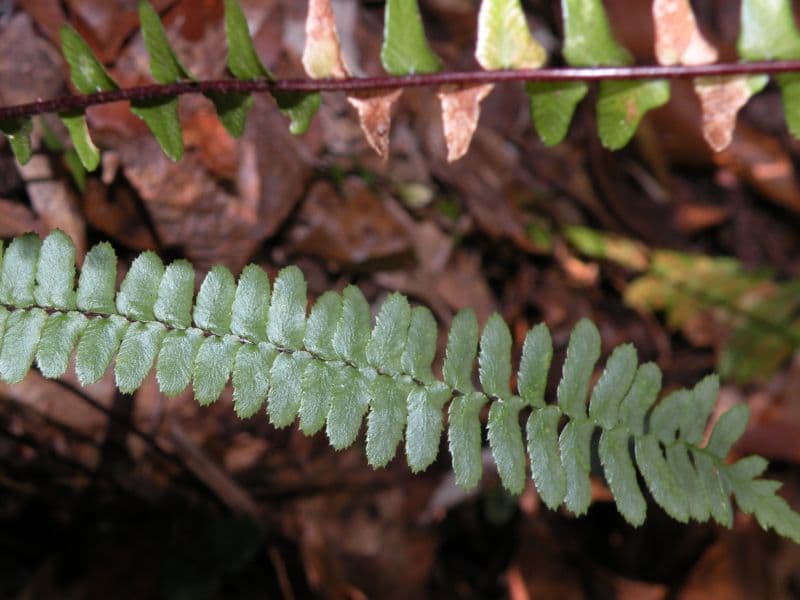
Proliferating buds
Ebony spleenwort is capable of proliferating by forming new plantlets from buds on the rachis at the base of the plant. These allow new individuals to form at different levels when prostrate fronds become buried in the leaf litter. Wagner & Johnson found proliferous buds in almost every site in the Great Lakes populations they studied; very rarely did more than one bud per plant occur. They occurred, on average, on 1 out of 6 plants, both on sterile and fertile fronds, and their position at the base of the lowest pinnae made them difficult to find among the cluster of fronds.
The buds are button-like, pale in color, and appear on the upper side of the lowest pinnae. Each bud contains a shoot and one or sometimes two leaf primordia, covered in clathrate scales, occasionally with roots if the bud has begun to develop. Contact with soil at the plant base stimulates their development, and the decay of their connection with the parental leaf results in the development of a new plant. Similar buds have also been reported from the single-sorus spleenwort, Asplenium monanthes.
Identification
The species most similar to Asplenium platyneuron is the black-stemmed spleenwort, A. resiliens. However, this species is darker, and the pinnae are opposite, rather than alternate, along the rachis. Maidenhair spleenwort, A. trichomanes, is also pinnately cut with a dark, glossy rachis, but the pinnae are oval and somewhat rounded rather than broadly oblong, usually less than two times as long as wide. Neither of these two species, nor the other pinnate American spleenworts, have dimorphic fertile and sterile fronds.
It is very similar to Boydston’s spleenwort, Asplenium × boydstoniae, an extremely rare backcross with Tutwiler’s spleenwort, Asplenium tutwilerae; however, Boydston’s spleenwort has an elongated, acute frond tip similar to that of Tutwiler’s spleenwort. Among similar South African spleenworts, A. lunulatum has proliferating frond tips, while A. monanthes has only one sorus on each pinna.
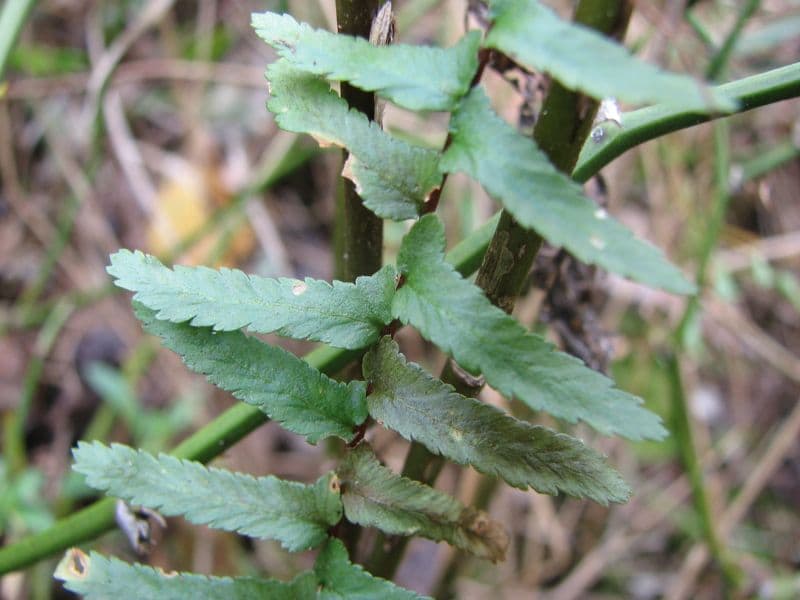
Among the larger ferns, A. platyneuron might be confused with a young Christmas fern, Polystichum acrostichoides, but that species is generally much larger and has a green, scaly stipe and rachis. Fishbone fern, Nephrolepis cordifolia, is likewise larger, with yellowish-green pinnae and a green rachis.
II. How to Grow and Care
Sunlight
For optimal growth, ebony spleenwort flourishes in partial sun, where it receives filtered or dappled light. While this indirect sunlight provides the energy ebony spleenwort needs without the stress of midday heat, it is quite adaptable and can tolerate full shade conditions. In shadier environments, ebony spleenwort may exhibit increased leaf growth to maximize light absorption, though it may be less vigorous than in ideal light.
When considering outdoor planting, ebony spleenwort does best under the canopy of larger plants or in areas where sunlight is tempered by structures. Ensuring that ebony spleenwort receives the right balance of light is key to maintaining its health and ornamental appeal.
Watering
Originating from shaded, moist environments, ebony spleenwort thrives in consistent humidity, reflecting its preference for a stable water supply. It exhibits moderate drought tolerance but flourishes best when the soil remains lightly moist without becoming waterlogged.
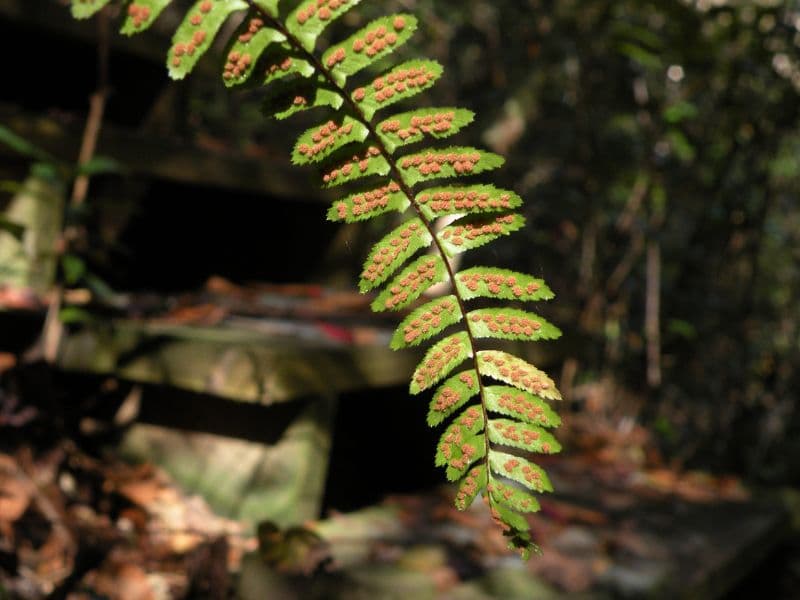
Watering should occur once every week to maintain optimal moisture levels. As an epiphytic fern commonly grown indoors due to its modest light requirements, ebony spleenwort benefits significantly from regular misting to simulate the humid conditions of its natural habitat.
Soil
It can be cultivated in sandy peat, subacid garden soil, other gravelly, sandy or gritty soils, or potting mix under moist to dry conditions. Both acid and alkaline soils are acceptable. Good drainage is essential, and the species will grow even in dry soil.
Fertilizing
For optimal growth, fertilize ebony spleenwort with balanced nutrition fertilizers every three months during active growth. The purpose is to sustain robust fern fronds and support rhizome development. Use half-strength dilution to prevent root burn. In winter, reduce feeding as growth slows. With a precise quantity as per the product label, fertilize near the base without direct contact with the fronds. Adhering to instructions ensures efficacy and avoids over-fertilization risks. For sustainable health, monitor soil fertility and adjust feeding accordingly.
Transplanting
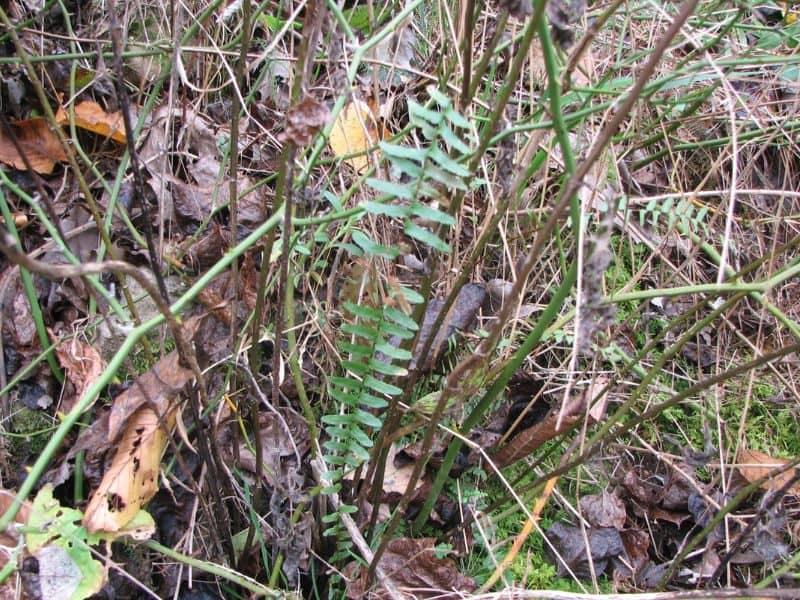
The prime time to transplant ebony spleenwort is during the cool seasons- typically S1-S3, as the damp soil promotes root growth. Choose a shady location to protect the plant from direct sunlight. Remember, slow and steady wins the transplanting race; never rush this delicate process.
Find Where to Buy the Best Ebony Spleenwort (Asplenium platyneuron)




















Leave a Reply